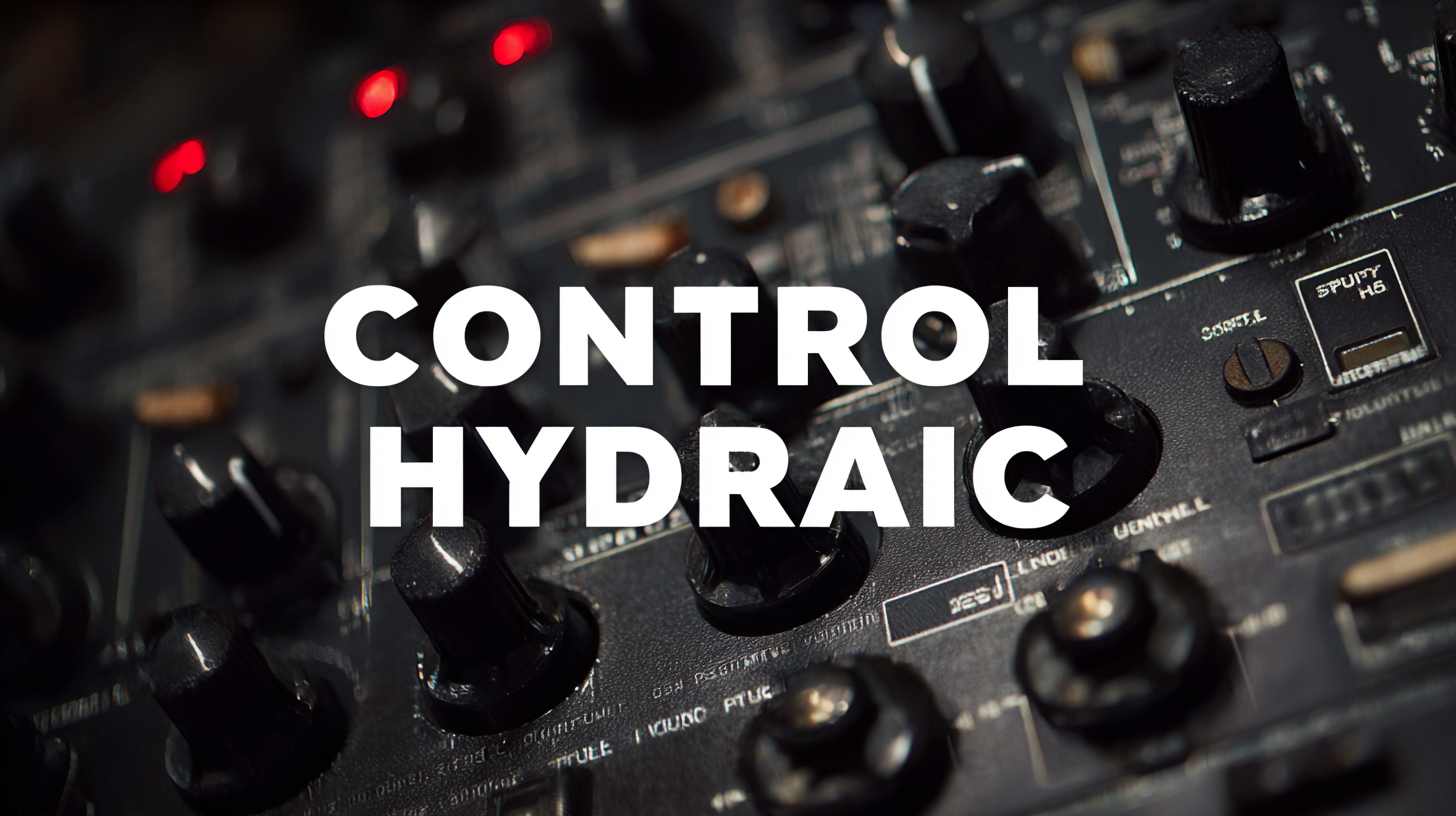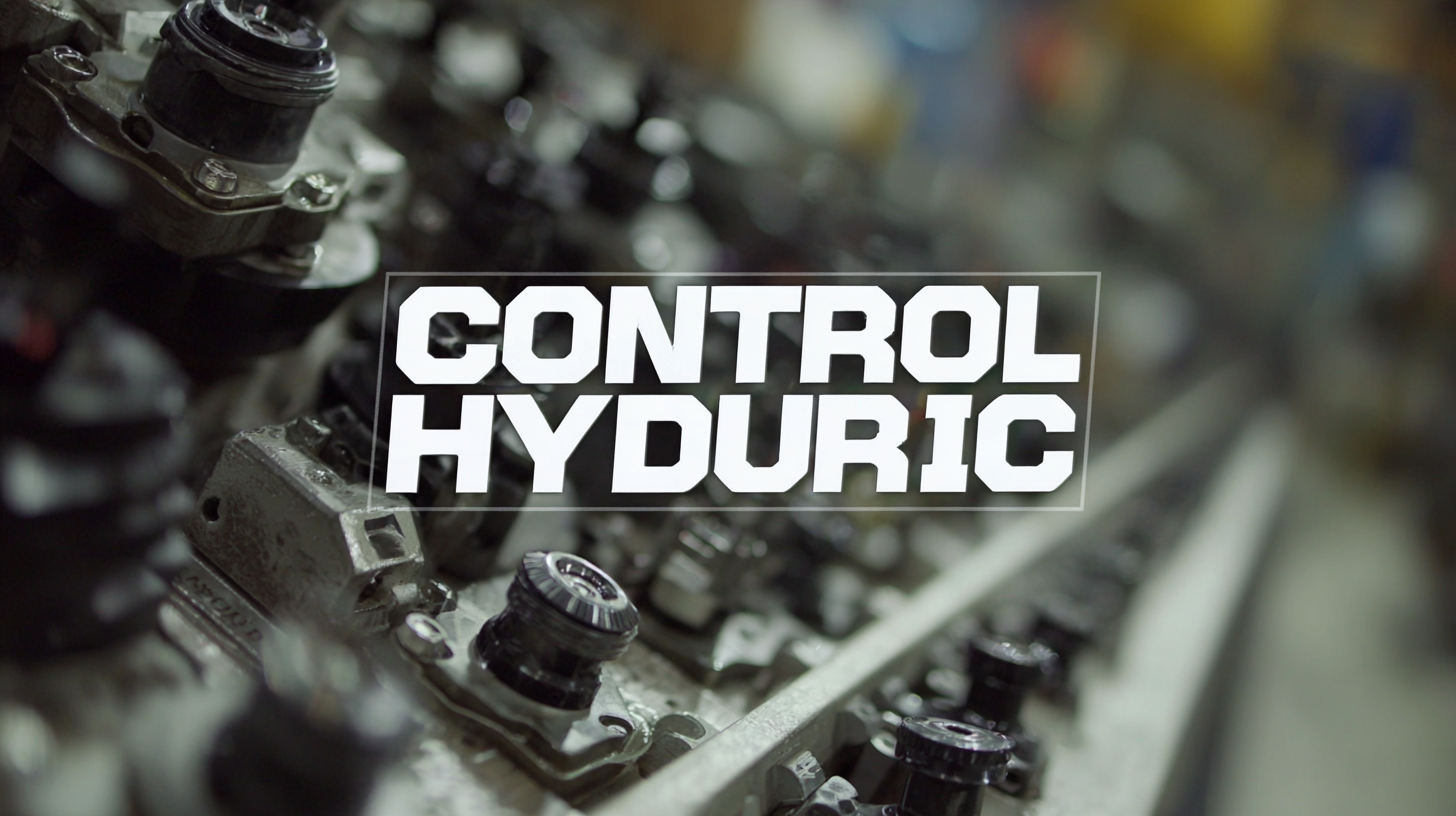The Ultimate Guide to Selecting the Best Control Hydraulic Systems for Your Global Procurement Needs
In today's highly competitive industrial landscape, selecting the right Control Hydraulic systems is crucial for organizations aiming to optimize their procurement processes on a global scale. With numerous options available, making an informed decision can be daunting, especially when considering factors such as quality, reliability, and efficiency. This blog aims to serve as the ultimate guide for businesses seeking to navigate the complexities of hydraulic system selection, with a particular focus on the exemplary standards set by leading Chinese manufacturers. By understanding the essential components and functionalities of Control Hydraulic systems, organizations can significantly enhance their operational capabilities while ensuring that they remain competitive in the global market. Join us as we delve into key considerations and strategic insights that will empower you to make the best procurement choices for your hydraulic needs.

Understanding the Basics of Hydraulic Systems for Global Procurement
Understanding the basics of hydraulic systems is crucial for effective global procurement, particularly as markets evolve and demand shifts. Hydraulic systems have become indispensable in various industries, functioning by transmitting power through fluid within a closed system. This technology not only increases efficiency but also offers enhanced control in operations, making it a preferred choice in sectors ranging from manufacturing to construction. As the global market for hydraulics is projected to grow significantly, with estimates reaching $44.26 billion by 2030, it is vital for procurement professionals to grasp the fundamentals of these systems.
When selecting the right hydraulic systems for global procurement needs, factors such as system compatibility, maintenance requirements, and cost-effectiveness must be considered. Additionally, understanding market trends—like the anticipated $52.6 billion growth in industrial hydraulic equipment by 2033—can provide valuable insights into future demands. Engaging with suppliers who offer robust solutions tailored to specific applications will be key in navigating this expanding market, ensuring businesses remain competitive and innovative in their operations.
The Importance of Hydraulic System Selection in Global Procurement
Key Factors to Consider When Selecting Control Hydraulic Systems
When selecting control hydraulic systems for global procurement, it’s essential to consider several key factors that can impact both performance and cost. One vital aspect is the system’s compatibility with various industrial applications. According to a report by Research and Markets, the hydraulic systems market is projected to grow at a CAGR of 6.2% through 2027, driven by advancements in automation and energy efficiency. Ensuring that the system meets specific operational requirements and industry standards is crucial for maintaining productivity and safety.
Tip: Before finalizing your selection, conduct a thorough assessment of your existing processes and identify any integration needs. This will save time and resources in the long run.
Another critical factor is the supplier’s reputation and service capabilities. A recent analysis by Frost & Sullivan highlighted that around 70% of procurement failures can be linked to inadequate supplier support and responsiveness. Choosing a supplier who offers comprehensive maintenance services and technical support can enhance the longevity and reliability of your hydraulic systems.
Tip: Engage with potential suppliers to understand their service offerings and inquire about their track record on response times and maintenance efficiency. This will provide insights into their reliability as a partner.
The Ultimate Guide to Selecting the Best Control Hydraulic Systems for Your Global Procurement Needs
| Factor | Description | Importance Level |
|---|---|---|
| System Compatibility | Ensure the hydraulic system is compatible with existing machinery and systems. | High |
| Performance Metrics | Evaluate the flow rate, pressure output, and overall efficiency of the system. | High |
| Cost | Consider both initial purchase costs and long-term maintenance expenses. | Medium |
| Supplier Reliability | Assess the track record of suppliers in terms of delivery, support, and quality. | High |
| Technological Features | Look for advanced features such as automation, diagnostics, and IoT connectivity. | Medium |
| Regulatory Compliance | Ensure the system complies with local and international industry standards. | High |
| Ease of Maintenance | Evaluate the accessibility and availability of parts for future maintenance needs. | Medium |
Emerging Technologies Shaping Hydraulic Systems by 2025
As we approach 2025, emerging technologies are set to transform hydraulic systems significantly. The integration of IoT (Internet of Things) in hydraulic systems is one of the leading advancements. According to a recent report by MarketsandMarkets, the IoT in the hydraulic market is expected to grow from $800 million in 2020 to over $2.2 billion by 2025, at a CAGR of 23.5%. This growth highlights the increasing demand for smart, connected systems that enhance predictive maintenance, efficiency, and real-time data analytics.
Additionally, advancements in materials science are paving the way for more efficient hydraulic systems. High-performance polymers and composite materials are being developed to reduce weight and increase durability. According to a study by Research and Markets, the use of advanced materials in hydraulic applications is projected to grow at a CAGR of 15% over the next five years. This shift not only enhances performance but also contributes to sustainability goals, as lighter systems consume less energy and are easier to manufacture.
Finally, the adoption of electro-hydraulic systems is anticipated to reshape traditional hydraulic applications. A report from Technavio suggests that the electro-hydraulic actuators market will reach a valuation exceeding $1.3 billion by 2025, driven by their efficiency and compact design. This evolution indicates a broader trend towards automation and energy efficiency within the hydraulic sector, ultimately redefining how industries utilize hydraulic systems globally.
Best Practices for Global Sourcing of Hydraulic Solutions
When it comes to global sourcing of hydraulic solutions, understanding the nuances of procurement can significantly enhance operational efficiency and cost-effectiveness. One of the best practices is to establish strong relationships with reliable suppliers. By actively engaging with manufacturers and distributors across different regions, businesses can ensure a steady supply of quality hydraulic systems tailored to their specific needs. This not only fosters trust but also opens up opportunities for negotiating better terms and receiving timely support when issues arise.
Another key practice is to leverage technology in the procurement process. Utilizing advanced software for inventory management and supplier assessments can streamline operations and provide real-time insights into market trends. Additionally, adopting a data-driven approach enables companies to assess supplier performance and make informed decisions that align with their strategic goals. This technological integration fosters transparency and agility, which are crucial in today’s dynamic global market.

Evaluating Suppliers: Ensuring Quality and Compliance in Hydraulic Procurement
When it comes to procuring hydraulic systems, evaluating suppliers is paramount to ensuring the quality and compliance of the products. According to a report by MarketsandMarkets, the global hydraulic systems market is projected to reach USD 57.7 billion by 2025, with a compound annual growth rate (CAGR) of 5.1%. This growth underscores the importance of selecting suppliers who not only meet technical specifications but also adhere to stringent industry regulations. Suppliers with ISO 9001 certification indicate a commitment to quality management, making them a reliable choice for procurement professionals.

Furthermore, compliance with environmental standards such as ISO 14001 is increasingly crucial. A study by the International Organization for Standardization revealed that organizations implementing sustainable practices reported a 20% decrease in operational costs while enhancing their brand reputation. Consequently, when evaluating suppliers, it is essential to prioritize those who demonstrate a proactive approach to compliance and sustainability. By focusing on quality certifications and environmental commitments, procurement teams can mitigate risks and ensure that their hydraulic systems are both reliable and ethically sourced, ultimately contributing to successful project outcomes.